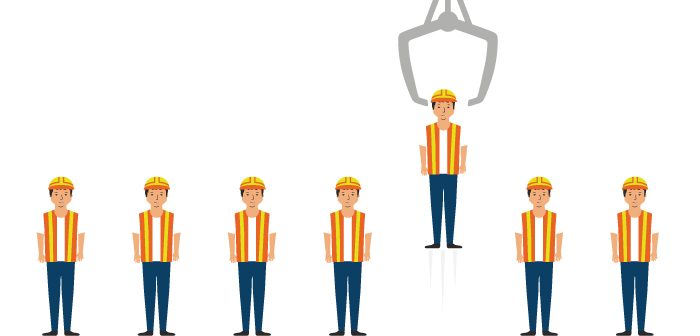How to Decrease Jobsite Operational Costs With Scalable Technology
The construction industry has been slow to adapt to information technology, but is beginning to realize the potential of the cloud. Today’s leaders recognize that cloud technology and 5G connectivity can transform how they plan and manage projects, monitor their machinery and fleets, estimate bids and increase productivity. Cloud technology is enabling new ways of working… And the industry needs it.

Construction companies face skilled labor shortages, supply chain problems, and fragmented operations. COVID-19 has amplified these problems, which have been gathering steam for years. Today’s leaders realize they need to evolve — not just to thrive but to survive.
Cloud technology can prepare construction companies to face the uncertainty of an ever-evolving business environment by combining out-of-the-box microservices in ways that address the specific needs of the business. Lean, event-driven applications can provide leaders and teams with increased jobsite visibility; real-time, data-driven decision-making; onsite access to up-to-date plans; and increased collaboration. The real advantage for construction businesses using the cloud, however, is its ability to reduce operational costs.
Reducing Operational Costs

High operating costs have troubled the construction industry for years. Some are unavoidable — wages, rent and utilities, for example. Other costs, however, can be minimized, such as those associated with maintenance, job scheduling and paper-based workflows. While it was once cost-prohibitive to implement technology solutions across multiple jobsites, cloud services and 5G networks finally make it feasible to access advanced business software from any device at any time, without the need to install expensive IT hardware at individual jobsites. By utilizing a global network of cloud services that hundreds of thousands of other companies use as well, it is possible to take advantage of economies of scale that lower technology costs. Further, the flexibility to only pay for the services when they are needed reduces overall IT spending.
Pay-As-You-Go Technology
Cloud capabilities reduce the need for always-on, onsite technology infrastructure. With servers and other infrastructure in the cloud, construction businesses can take advantage of the pay-as-you-go model. That means they can turn cloud services on for new jobs and scale the services back as they wrap up; or they can configure cloud systems to auto-scale down every night and weekend, saving significant funds.
Skilled Worker Resource Management

With tools in the cloud, skilled workers can track their time accurately to ensure they spend as much time as possible on critical tasks. In a time when skilled workers are in high demand, helping them achieve optimal productivity is a major cost-saver. “Internet of Things” (IoT) devices at the jobsite, combined with complex time-tracking models, can deliver better insights into each worker’s tasks. They can even provide recommendations on how to reallocate resources.
Predictive Maintenance
Cloud-based IoT services can also help reduce costly and unexpected repairs by providing accurate and automated monitoring of equipment and machinery. These devices alert the crew when maintenance is needed and automate the process of submitting a ticket to the team in charge of repairs — extending the life of the machine and reducing time spent manually tracking maintenance schedules and unplanned downtime.
Digital Communications
In any project, with hundreds or thousands of details in play, communication is key. Unfortunately, much of the communication in the construction industry is still paper-based. Many project managers are still printing out paper documents and physically taking them to the jobsite every day. Sometimes these documents get lost, and high-skilled workers must often return to the office to reprint them. By tracking this data in a well-organized cloud application, crews can save time and focus on skilled work, field data can be made more accessible, and projects can stay organized.
Getting Started In The Cloud

While many of the benefits above have the power to transform, businesses don’t have to make a significant change to see results. It’s possible to shift one or two workflows to the cloud to start. Or a first iteration could consist of building a lean modern application to streamline a specific process. Taking an agile approach allows cloud innovators to prove the power and cost-effectiveness of the cloud to key stakeholders so that taking a bigger step in phase two becomes more feasible and less risky. Smaller steps can also include lift and shift migrations in which a legacy business application is transitioned as-is to powerful and affordable cloud infrastructure. This shift makes the system’s functionality more widely available and improves its performance while making minimal adjustments; the application will work faster and be easier to use and maintain.
Alternatively, construction businesses could take a hybrid approach for critical on-premises systems. For example, a hybrid strategy could consist of rebuilding a business application module-by-module using modern cloud-native architecture. Or, an on-premise solution could leverage a specific cloud service at all times, such as cloud storage of assets, to drive better performance.
Cloud enablement is about more than innovation. Business leaders should focus on improving the company’s bottom line and business operations through lean project management and by adopting new ways of thinking about, interacting with and supporting key stakeholders.
Link to original article

